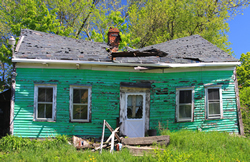Richard Wakelin* says that what goes on in your neighbourhood heavily influences the performance of a residential asset.

Photo: Denis Tangney, jr
No property investor is an island.
What goes on in the neighbourhood heavily influences the performance of a residential asset.
The most apparent demonstration of this is the use by professional valuers and knowledgeable market participants of recent comparable sale data to help establish the fair value of a subject property.
But a smart property investor must dig deeper to understand the economic, social and market forces at play in their locality to understand whether the assets they hold (or are thinking of buying) have an auspicious or ominous profile.
Thankfully, it is also possible for investors to do this research and analysis.
For instance, it is well understood that regions that are highly dependent on one industry — especially a cyclical one — are prone to booms and busts.
The classic example is Perth and mining.
So ideally, investors want to be part of an area where there is a diverse range of industry types and, to be more specific, where the resident occupations are varied and skewed towards the well-paid and secure, and individuals are tertiary-educated.
That’s a lot of factors to consider.
Happily, the Australian Bureau of Statistics (ABS) has an excellent tool called the Socio-Economic Indexes for Areas, 2016 (SEIFA 2016) that weights many of these factors.
It is based on the 2016 Census so the data is reasonably fresh.
In particular, investors should look closely at the Index of Relative Socio-Economic Advantage and Disadvantage (IRSAD), the Index of Economic Resources (IER) and the Index of Education and Occupation (IEO).
At a glance
One doesn’t need to be a data scientist to interpret these indexes.
The ABS provides interactive maps to deliver at-a-glance insights into which areas do well (or poorly) on economic advantage, wealth and education outcomes.
And because the information is based on detailed Census information, one can zoom in and often see the index results for areas as small as four or so street blocks containing just 400 or 500 people.
Another admirable resource is available from .id, a demography firm.
They work for hundreds of Local Councils across Australia, so are focused on data at the local level.
Generously, they make much of it freely available to the rest of us at home.id.com.au.
As well as incorporating SEIFA 2016 information, the website pulls in other relevant Census/ABS measures such as employment of residents by industry and occupation, dwelling types and tenure and building approval numbers.
For incumbent investors, the critical question will be: what data should I be looking at to decide whether I should sell up?
If there was only one dataset to watch, it is likely it would be the regional personal insolvency statistics from the Australian Financial Security Authority (AFSA).
The data comes out quarterly and reports the number of insolvencies at a Local Council level.
High numbers are clearly bad news.
Unsurprisingly, there is a strong correlation between capital city fringe suburbs and insolvencies.
Of course, I’m not a bear on the overall long-term outlook for the Australian property market.
So I think many owners who undertake this analysis will be comforted.
But there are some geographic markets where alarm is merited.
* Richard Wakelin is a founder of Wakelin Property Advisory and a contributor to The Australian Financial Review.
This article first appeared at www.afr.com.



